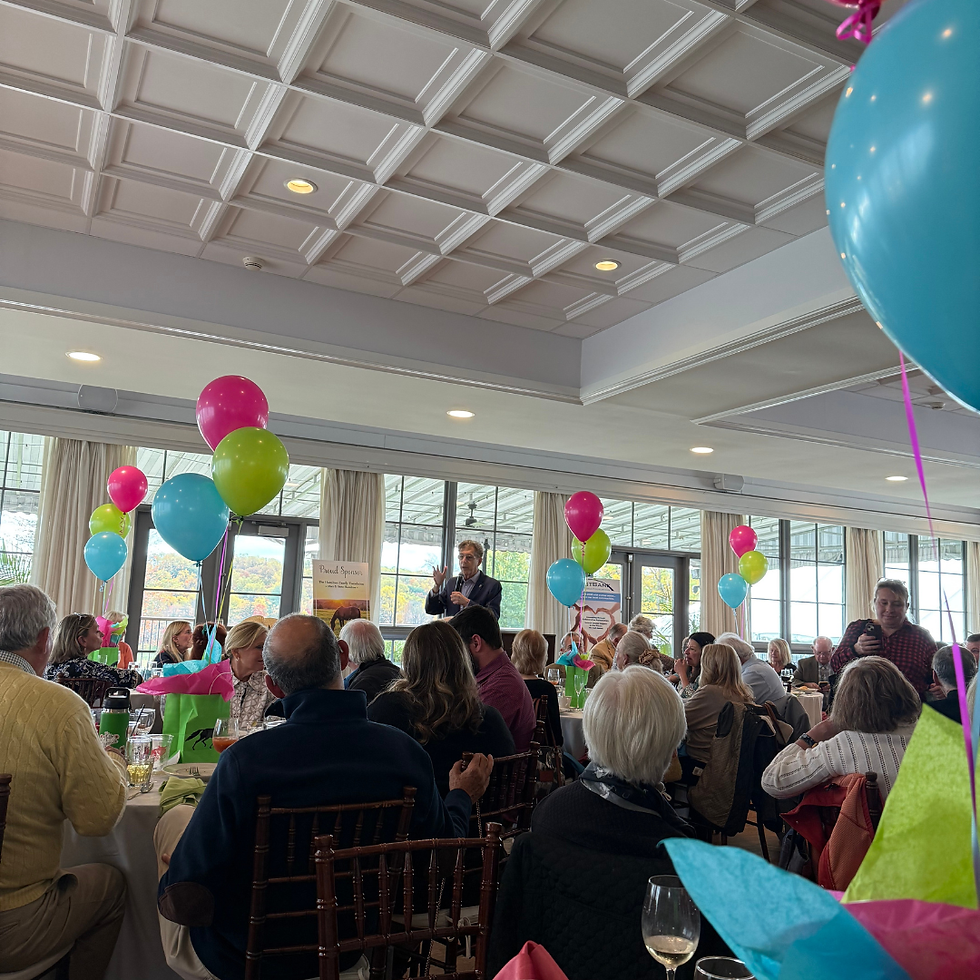Spring Horse Training Tips: Conditioning Senior Horses
- Ryerss Farm

- Mar 29, 2021
- 4 min read

Spring is finally here! Now is the perfect time to take your beloved horse out of the stable and exercise with him/her. If you have an older horse, they require a different type of care when training compared to your younger horses. Here are a few tips on how to condition
and train your older horse.

1. Routine Check-Ups
Since you want to train and condition your older horse, it is crucial that you take the horse in for routine health checkups. An evaluation will allow you to see how healthy your horse really is. The joints, teeth, body condition, and feet will be checked. When looking at the joints of older horses, many develop osteoarthritis due to old age. Exercise can help keep weight at a healthy level and will steadily increase the muscle movement. Teeth need to be inspected for gum disease and cracked teeth; If a horse has trouble chewing, this could eventually result in malnutrition and other problematic issues. Your horse’s body condition will be checked to see if the horse is overweight, underweight, or at a normal weight. In regard to your horse’s feet, the veterinarian will check to see if your horse needs to be trimmed more often; most older horses need to have their feet trimmed 6-8 weeks. Your veterinarian will be able to provide you with medications, different feeds, and vitamins if your horse has any issues; nutritional needs become more vital as the horse’s health is declining or old age is kicking in. Make sure to go over your conditioning program as well with the veterinarian to get their opinion.

2. Reduced Exercise Schedule
It is important to plan a reduced exercise schedule. Since your horse isn’t as young as he/she used to be, you have to make sure you are giving the horse the proper amount of exercise without overworking both of you. It is smarter to go slower in the beginning and work up to a stronger routine if the horse can handle it. It is recommended that 10-15 minute sessions 3 times a week is a good start. In the beginning, work on groundwork and work in hand. For example, circles in hand may be a great first exercise to test out. After a few weeks, try to work on more intense conditioning such as hill training; see how the horse reacts after a session and modify from there. A more difficult exercise for an older horse would jumping; if the horse is healthy and willing, test it out.
In addition to a reduced exercise schedule, it is extremely important to take your horse on walks. This is a great way to allow your horse to exercise while not exerting too much energy. The walk should occur after the reduced exercise. The horse can then steadily decrease back to the normal heart rate, regulate the body temperature, and the body can become relaxed once again.

3. Outdoor Weather
Spring is known to have warmer temperatures and some days can even be hot. You should not take your horse out when the weather is hot. Older horses have issues trying to regulate their body temperature on hot days; they are also less efficient than normal in the heat. Another huge reason not to take an older horse out in hot weather is due to dehydration. It is known that older horses dehydrate much quicker than younger horses. Make sure to evaluate your horse’s gums and mouth moisture to make sure he/she is not overheating.
Make sure your horse does have time outdoors. It is important to give your horse plenty of fresh air and room to roam around with the other horses. A horse also needs time to be around other horses for social needs.

4. Toning Exercises
There are a few toning exercises that you could try to do with your horse. Groundwork exercises will be most beneficial for the older horse. If you want to work on lifting, you should try either the cavaletti or half pass along the fence. You can also add blocks to raise timber to the cavaletti exercise if your horse is healthy enough. The half pass along the fence is great for muscle tone and flexibility.
A few bending exercises that could be beneficial are spirals, larger circles, ponying and lunging. Larger circles help with the start of initiating the bend; allow the horse to choose which side, and how large, the circle is based on the horse’s comfortability. Another great toning exercise is foot placement. Make sure to walk beside your horse to see if they struggle with foot placement.
Spring is the best time to condition your older horse. Hopefully, these tips will be useful to utilize with your horse. The horses at Ryerss Farm are 100% retired (no riding/driving); they get exercise playing with their friends while being turned out in the big fields at our 350+ acre farm. Visit our website if you have any questions or if you want to learn more about older horses, how you can support them, visitation information, and donation information in regards to all of the residents at Ryerss Farm.
.png)







Comments